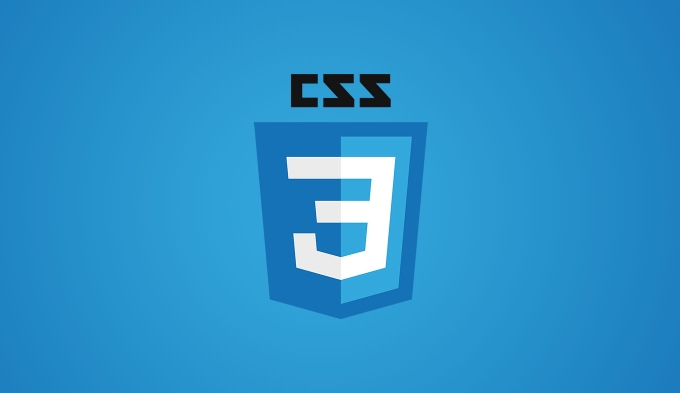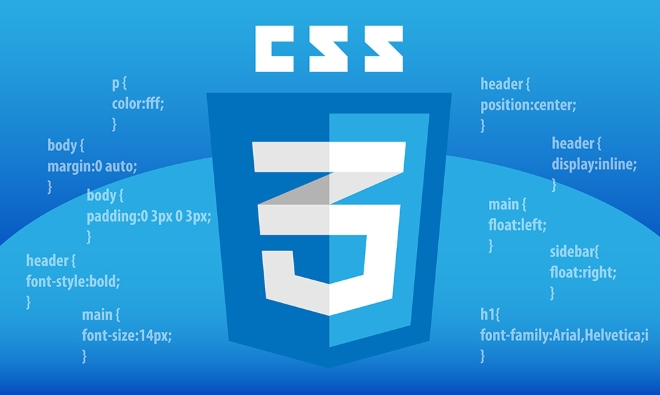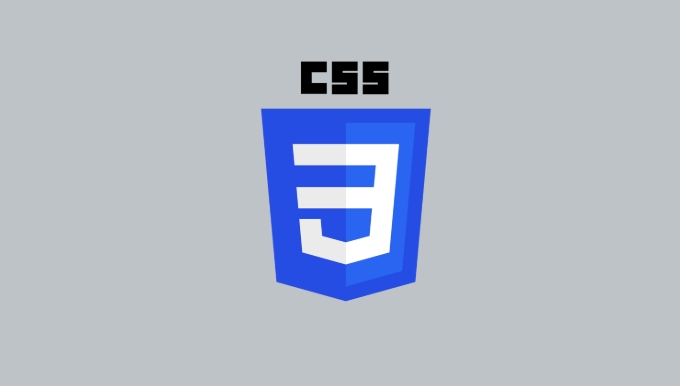Sticky footer layouts can be easily implemented with Flexbox. First, set display: flex and flex-direction: column for the body, and set flex: 1 for the main content area to fill the remaining space; at the same time, make sure that the body has min-height: 100vh, so that the footer is always fixed to the bottom of the viewport when the content is insufficient; the HTML structure should clearly include three parts: header, main and footer to avoid additional wrapping elements from interfering with the layout; common problems to note include not missing the min-height attribute, avoiding setting fixed heights for the header or footer, and checking the compatibility of nested flex projects, especially when supporting IE11, additional adjustments may be required.

A sticky footer stays at the bottom of the page even when there's not enough content to push it down. It sounds simple, but getting it right without JavaScript can be a bit tricky if you're not familiar with the layout techniques.

Use Flexbox for Simplicity
Flexbox is one of the easiest and most reliable ways to create a sticky footer. The idea is to make the body a flex container and push the footer to the bottom when there's not enough content.
Here's how:

- Set
display: flexon the body - Use
flex-direction: column - Make the main content area take up remaining space using
flex: 1
body {
display: flex;
flex-direction: column;
min-height: 100vh;
}
main {
flex: 1;
}This setup ensures that the footer will stick to the bottom of the viewport when content is short, and behave normally when content overflows.
Consider HTML Structure
Your HTML structure matters just as much as the CSS. For this layout to work well, you need a clear separation between your header, main content, and footer.

<body> <header>Header Content</header> <main>Main Content</main> <footer>Footer Content</footer> </body>
Avoid placing any extra wrappers or elements outside this flow unless necessary. Keeping the structure clean helps prevent unexpected spacing or alignment issues.
Watch Out for Common Pitfalls
Even though the Flexbox method works well, there are a few common issues to watch out for:
- Don't forget
min-height: 100vhon the body — otherwise, the layout might not stretch fully on short pages. - Avoid setting fixed heights on the header or footer unless you're sure they won't cause overflow problems.
- If you have nested flex items, double-check their behavior — sometimes inner flex containers can interfere with the layout.
Also, remember that older browsers like IE11 may require extra tweaks, so test accordingly if support is needed.
Basically that's it. Sticky footer layouts are straightforward once you understand how Flexbox handles space distribution. Just keep your structure clean, use basic CSS properties, and test in different content scenarios.
The above is the detailed content of How do you create a sticky footer layout?. For more information, please follow other related articles on the PHP Chinese website!

Hot AI Tools

Undress AI Tool
Undress images for free

Undresser.AI Undress
AI-powered app for creating realistic nude photos

AI Clothes Remover
Online AI tool for removing clothes from photos.

Clothoff.io
AI clothes remover

Video Face Swap
Swap faces in any video effortlessly with our completely free AI face swap tool!

Hot Article

Hot Tools

Notepad++7.3.1
Easy-to-use and free code editor

SublimeText3 Chinese version
Chinese version, very easy to use

Zend Studio 13.0.1
Powerful PHP integrated development environment

Dreamweaver CS6
Visual web development tools

SublimeText3 Mac version
God-level code editing software (SublimeText3)
 Questions frequently asked by front-end interviewers
Mar 19, 2024 pm 02:24 PM
Questions frequently asked by front-end interviewers
Mar 19, 2024 pm 02:24 PM
In front-end development interviews, common questions cover a wide range of topics, including HTML/CSS basics, JavaScript basics, frameworks and libraries, project experience, algorithms and data structures, performance optimization, cross-domain requests, front-end engineering, design patterns, and new technologies and trends. . Interviewer questions are designed to assess the candidate's technical skills, project experience, and understanding of industry trends. Therefore, candidates should be fully prepared in these areas to demonstrate their abilities and expertise.
 CSS Layout Tips: Best Practices for Implementing the Stacked Card Effect
Oct 22, 2023 am 08:19 AM
CSS Layout Tips: Best Practices for Implementing the Stacked Card Effect
Oct 22, 2023 am 08:19 AM
CSS Layout Tips: Best Practices for Achieving Stacked Card Effects In modern web design, card layout has become a very popular design trend. Card layout can effectively display information, provide a good user experience, and facilitate responsive design. In this article, we’ll share some of the best CSS layout techniques for achieving a stacked card effect, along with specific code examples. Layout using Flexbox Flexbox is a powerful layout model introduced in CSS3. It can easily achieve the effect of stacking cards
 CSS Positions layout method to implement responsive image layout
Sep 26, 2023 pm 01:37 PM
CSS Positions layout method to implement responsive image layout
Sep 26, 2023 pm 01:37 PM
CSSPositions layout method to implement responsive image layout In modern web development, responsive design has become an essential skill. In responsive design, image layout is one of the important considerations. This article will introduce how to use CSSPositions layout to implement responsive image layout and provide specific code examples. CSSPositions is a layout method of CSS that allows us to position elements arbitrarily in the web page as needed. In responsive image layout,
 CSS layout tutorial: The best way to implement a two-column responsive layout
Oct 18, 2023 am 11:04 AM
CSS layout tutorial: The best way to implement a two-column responsive layout
Oct 18, 2023 am 11:04 AM
CSS Layout Tutorial: The Best Way to Implement Two-Column Responsive Layout Introduction: In web design, responsive layout is a very important technology that allows web pages to automatically adjust their layout according to the screen size and resolution of the user's device, providing Better user experience. In this tutorial, we'll show you how to use CSS to implement a simple two-column responsive layout, and provide specific code examples. 1. HTML structure: First, we need to create a basic HTML structure, as shown below: <!DOCTYPEht
 The evolution and application of CSS layout units: from pixels to relative units based on the font size of the root element
Jan 05, 2024 pm 05:41 PM
The evolution and application of CSS layout units: from pixels to relative units based on the font size of the root element
Jan 05, 2024 pm 05:41 PM
From px to rem: The evolution and application of CSS layout units Introduction: In front-end development, we often need to use CSS to implement page layout. Over the past few years, CSS layout units have evolved and developed. Initially we used pixels (px) as the unit to set the size and position of elements. However, with the rise of responsive design and the popularity of mobile devices, pixel units have gradually exposed some problems. In order to solve these problems, the new unit rem came into being and was gradually widely used in CSS layout. one
 CSS Layout Tips: Best Practices for Implementing Circular Grid Icon Layout
Oct 20, 2023 am 10:46 AM
CSS Layout Tips: Best Practices for Implementing Circular Grid Icon Layout
Oct 20, 2023 am 10:46 AM
CSS Layout Tips: Best Practices for Implementing Circular Grid Icon Layout Grid layout is a common and powerful layout technique in modern web design. The circular grid icon layout is a more unique and interesting design choice. This article will introduce some best practices and specific code examples to help you implement a circular grid icon layout. HTML structure First, we need to set up a container element and place the icon in this container. We can use an unordered list (<ul>) as a container, and the list items (<l
 Methods and techniques on how to implement waterfall flow layout through pure CSS
Oct 20, 2023 pm 06:01 PM
Methods and techniques on how to implement waterfall flow layout through pure CSS
Oct 20, 2023 pm 06:01 PM
Methods and techniques on how to implement waterfall flow layout through pure CSS. Waterfall layout (Waterfall Layout) is a common layout method in web design. It arranges content in multiple columns with inconsistent heights to form an image. Waterfall-like visual effects. This layout is often used in situations where a large amount of content needs to be displayed, such as picture display and product display, and has a good user experience. There are many ways to implement a waterfall layout, and it can be done using JavaScript or CSS.
 CSS Layout Guide: Best Practices for Implementing Grid Layout
Oct 26, 2023 am 10:00 AM
CSS Layout Guide: Best Practices for Implementing Grid Layout
Oct 26, 2023 am 10:00 AM
CSS Layout Guide: Best Practices for Implementing Grid Layout Introduction: In modern web design, grid layout has become a very popular layout method. It can help us better organize the page structure and make it more hierarchical and readable. This article will introduce the best practices of grid layout and specific code examples to help you better implement grid layout. 1. What is grid layout? Grid layout refers to dividing the page into multiple columns and rows through a grid, so that the elements of the page can be easily arranged according to certain rules. grid layout






